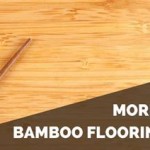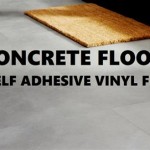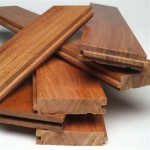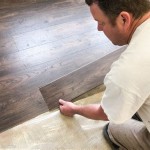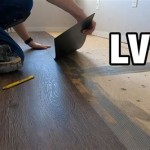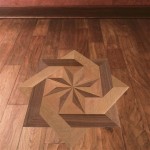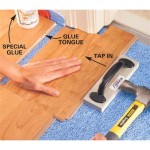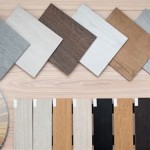How Much Do Herringbone Wood Floors Cost?
Herringbone wood flooring, with its distinctive V-shaped pattern, adds a touch of elegance and sophistication to any space. However, this classic style often comes with a higher price tag than standard plank flooring. Understanding the various factors that influence the overall cost can help homeowners budget effectively for their flooring project.
The cost of herringbone wood flooring is typically calculated per square foot and can vary significantly based on several key factors. These factors include the type of wood species, the grade of the wood, labor costs, and additional materials required for installation.
Wood Species: The choice of wood species plays a substantial role in determining the overall cost. Domestic hardwoods like oak and maple generally fall on the lower end of the price spectrum. Exotic hardwoods such as mahogany, walnut, and cherry tend to be considerably more expensive due to their rarity, durability, and unique grain patterns.
Wood Grade: Wood grading systems categorize lumber based on its appearance and characteristics. Higher grades, with fewer knots and imperfections, command a higher price per square foot. Lower grades, while more affordable, may require more time and effort during installation to work around imperfections, potentially impacting labor costs.
Labor Costs: Installing herringbone flooring is a more complex and time-consuming process than installing traditional straight-lay flooring. The intricate pattern requires precise cutting and placement, demanding a higher level of skill and expertise from the installer. Consequently, labor costs for herringbone installation are typically higher.
Installation Method: The method used to install the herringbone floor also affects the price. Solid wood flooring, installed using nails or staples, generally involves higher labor costs compared to engineered wood flooring, which can often be glued or clicked together. Engineered wood flooring, constructed with a layered core, also tends to be more dimensionally stable, potentially reducing installation time and costs.
Subfloor Preparation: The condition of the subfloor is crucial for a successful herringbone installation. Any unevenness or imperfections in the subfloor must be addressed before installation. This may involve additional costs for leveling, patching, or replacing the subfloor entirely. These preparatory steps ensure a stable and level surface for the herringbone pattern.
Additional Materials: Beyond the wood flooring itself, several other materials contribute to the overall project cost. These include underlayment, adhesive, finishing products (stain and sealant), and trim pieces. The quality and type of these materials can impact both the final appearance and the overall cost of the project.
Project Size: The square footage of the area to be covered directly impacts the total cost. While larger projects require more materials, they may benefit from economies of scale, potentially reducing the per-square-foot cost of materials and, in some cases, labor.
Geographic Location: Labor costs can fluctuate significantly based on geographic location. Areas with higher labor rates will generally see higher overall costs for herringbone flooring installation. Material costs can also be affected by regional availability and transportation expenses.
Pattern Variations: While the traditional herringbone pattern consists of uniform planks laid at a 45-degree angle, variations exist. These more complex patterns, such as double herringbone or chevron, require even more precise cutting and installation, leading to increased labor costs.
Finishes: The choice of finish can impact the final cost. Basic finishes might be included in the price of the flooring, while more specialized finishes, such as hand-scraped or distressed looks, often add to the overall expense. The number of coats of finish applied also influences the final cost.
Waste Factor: Due to the angled cuts required for herringbone installation, there is inherently more waste than with straight-lay flooring. This waste factor is typically factored into the material estimate, increasing the overall quantity of flooring required.
Maintenance and Repairs: While not a direct installation cost, considering the long-term maintenance and repair expenses associated with herringbone flooring is important. Repairs can be more complex and costly due to the intricate pattern, requiring specialized skills and potentially the replacement of multiple pieces to maintain the pattern's integrity.
Obtaining multiple quotes from reputable flooring contractors is essential for accurately assessing the cost of a herringbone flooring project. Detailed quotes should itemize material costs, labor charges, and any additional expenses associated with subfloor preparation or finishing.

How Much Does It Cost To Install Herringbone Wood Floors Lv Flooring Toronto

How Much Does It Cost To Install Herringbone Wood Floors French Manufacturer Of Designer Wooden Flooring Panaget

True Cost Of Herringbone Floors The Dedicated House

Herringbone Floor Installation Costs And What Impacts The

How Much Does Herringbone Hardwood Flooring Cost Lv Toronto

Herringbone Floor Installation Costs And What Impacts The

Herringbone Floor Installation Cost In 2025 Checkatrade

How Much Does Herringbone Wood Floors Cost Three Trees Flooring

How Much Do Herringbone Wood Floors Cost 3 Actual Quotes

How Much Does It Cost To Install Herringbone Wood Floors Lv Flooring Toronto
See Also
